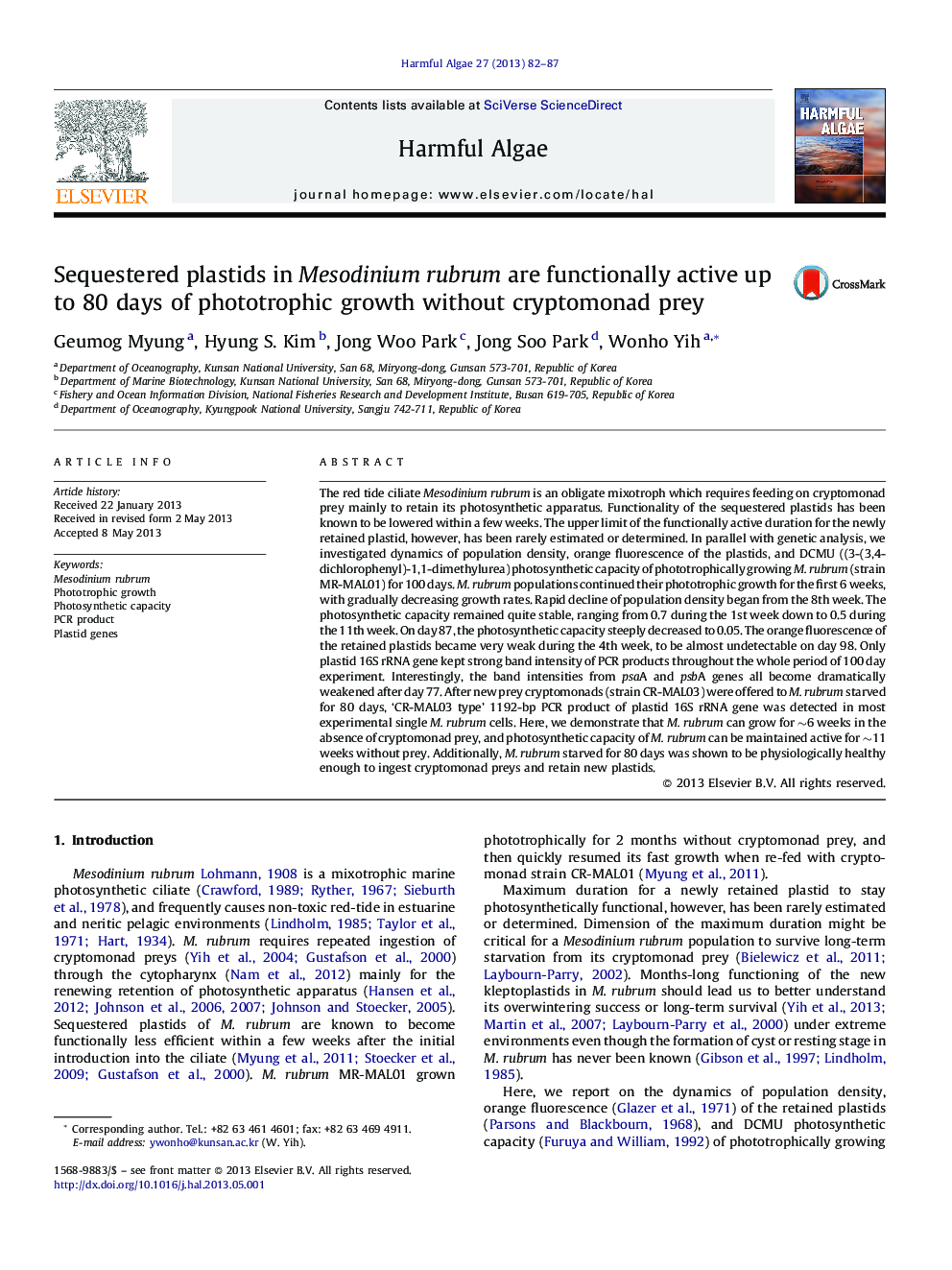| کد مقاله | کد نشریه | سال انتشار | مقاله انگلیسی | نسخه تمام متن |
|---|---|---|---|---|
| 6386323 | 1626944 | 2013 | 6 صفحه PDF | دانلود رایگان |
عنوان انگلیسی مقاله ISI
Sequestered plastids in Mesodinium rubrum are functionally active up to 80 days of phototrophic growth without cryptomonad prey
دانلود مقاله + سفارش ترجمه
دانلود مقاله ISI انگلیسی
رایگان برای ایرانیان
موضوعات مرتبط
علوم زیستی و بیوفناوری
علوم کشاورزی و بیولوژیک
علوم آبزیان
پیش نمایش صفحه اول مقاله

چکیده انگلیسی
The red tide ciliate Mesodinium rubrum is an obligate mixotroph which requires feeding on cryptomonad prey mainly to retain its photosynthetic apparatus. Functionality of the sequestered plastids has been known to be lowered within a few weeks. The upper limit of the functionally active duration for the newly retained plastid, however, has been rarely estimated or determined. In parallel with genetic analysis, we investigated dynamics of population density, orange fluorescence of the plastids, and DCMU ((3-(3,4-dichlorophenyl)-1,1-dimethylurea) photosynthetic capacity of phototrophically growing M. rubrum (strain MR-MAL01) for 100 days. M. rubrum populations continued their phototrophic growth for the first 6 weeks, with gradually decreasing growth rates. Rapid decline of population density began from the 8th week. The photosynthetic capacity remained quite stable, ranging from 0.7 during the 1st week down to 0.5 during the 11th week. On day 87, the photosynthetic capacity steeply decreased to 0.05. The orange fluorescence of the retained plastids became very weak during the 4th week, to be almost undetectable on day 98. Only plastid 16S rRNA gene kept strong band intensity of PCR products throughout the whole period of 100 day experiment. Interestingly, the band intensities from psaA and psbA genes all become dramatically weakened after day 77. After new prey cryptomonads (strain CR-MAL03) were offered to M. rubrum starved for 80 days, 'CR-MAL03 type' 1192-bp PCR product of plastid 16S rRNA gene was detected in most experimental single M. rubrum cells. Here, we demonstrate that M. rubrum can grow for â¼6 weeks in the absence of cryptomonad prey, and photosynthetic capacity of M. rubrum can be maintained active for â¼11 weeks without prey. Additionally, M. rubrum starved for 80 days was shown to be physiologically healthy enough to ingest cryptomonad preys and retain new plastids.
ناشر
Database: Elsevier - ScienceDirect (ساینس دایرکت)
Journal: Harmful Algae - Volume 27, July 2013, Pages 82-87
Journal: Harmful Algae - Volume 27, July 2013, Pages 82-87
نویسندگان
Geumog Myung, Hyung S. Kim, Jong Woo Park, Jong Soo Park, Wonho Yih,